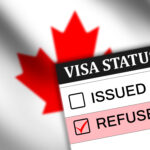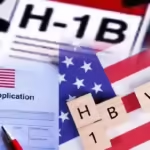
A Comprehensive Guide to Express Entry’s Tie-Breaking Rule: How It Impacts Your Immigration Chances
Table of Contents:
- Overview of the Express Entry System
- What is the Tie-Breaking Rule?
- How the Tie-Breaking Rule Determines Who Gets Invited
- Detailed Example of How the Tie-Breaking Rule Works
- Why the Tie-Breaking Rule is Crucial for Fairness
- What Happens if You Modify Your Express Entry Profile?
- Understanding Express Entry: Canada’s Skilled Worker Immigration System
- Tips for Improving Your Chances in Express Entry Draws
- Conclusion
1. Overview of the Express Entry System
Express Entry is Canada’s streamlined immigration system for managing applications from skilled workers seeking to become permanent residents. The system covers three main immigration programs:
- Federal Skilled Worker Program (FSWP)
- Canadian Experience Class (CEC)
- Federal Skilled Trades Program (FSTP)
Candidates for Express Entry are ranked based on a Comprehensive Ranking System (CRS) score. The CRS considers factors such as age, education, work experience, language skills, and other criteria that make candidates competitive for the Canadian labor market.
Once candidates are ranked, Immigration, Refugees, and Citizenship Canada (IRCC) holds periodic draws, issuing Invitations to Apply (ITAs) to the top-ranking candidates. This process allows the highest-scoring individuals to apply for Canadian permanent residency.
2. What is the Tie-Breaking Rule?
The tie-breaking rule is a procedure used by IRCC during Express Entry draws when multiple candidates have the same CRS score. Since several candidates can end up with identical scores, it becomes necessary to establish a way to prioritize who receives an ITA. This ensures fairness and order in the selection process.
When two or more candidates have the same CRS score, the tie-breaking rule applies based on the exact date and time when a candidate submitted their Express Entry profile. The candidate who entered the pool earlier (by submitting their profile first) will be prioritized for an ITA, even though they share the same CRS score as other candidates.
3. How the Tie-Breaking Rule Determines Who Gets Invited
Here’s how the tie-breaking rule works in practice. IRCC conducts draws periodically and invites the top-ranking candidates with the highest CRS scores to apply for permanent residency. If multiple candidates have the same score, the system uses the time stamp from when each candidate submitted their profile to break the tie.
For example, if two candidates have the same CRS score, the tie-breaking rule will look at the submission time. The candidate who submitted their profile earlier will be selected for an ITA.
4. Detailed Example of How the Tie-Breaking Rule Works
Let’s break this down with a practical example.
Imagine two candidates—Lara and Jean—both have a CRS score of 542.
- Lara submitted her profile on September 18, 2024.
- Jean submitted her profile on September 20, 2024.
In the November 2024 Express Entry draw, the CRS cut-off score is set at 542. Both candidates have the same score, so the tie-breaking rule will come into play.
IRCC publicly announces that the tie-breaking date and time for the draw is September 19, 2024, meaning that only the candidates who submitted their profiles before or at this time will receive an ITA.
- Since Lara submitted her profile before the tie-breaking date of September 19, she will receive an ITA.
- However, Jean submitted her profile after the tie-breaking date (on September 20), so she will not receive an ITA in this round.
Jean’s profile remains in the Express Entry pool, and she still has an opportunity to be invited in a future draw, as her profile will remain active.
5. Why the Tie-Breaking Rule is Crucial for Fairness
The tie-breaking rule is crucial for maintaining a fair and transparent selection process. Without this rule, the Express Entry system could become chaotic, as there could be disputes or confusion over who should be prioritized when several candidates have the same CRS score.
This rule ensures that all candidates are treated fairly by giving priority to those who have been in the system for longer, rather than those who might submit their profiles last minute or repeatedly update them to manipulate their chances.
As the number of applicants in the Express Entry pool increases, so does the likelihood that more candidates will have the same CRS score. As a result, the tie-breaking rule plays an increasingly important role in managing this situation and keeping the process orderly.
6. What Happens if You Modify Your Express Entry Profile?
One important detail to understand is how modifications to your profile affect the tie-breaking rule. If you make changes to your profile, such as updating your work experience or adding a language test score, the time stamp for your profile remains the same.
However, if you choose to delete your profile and resubmit it, the resubmission will receive a new time stamp, which could impact your chances in the next draw.
For example, if you delete your profile and resubmit it after the tie-breaking date for an upcoming draw, your profile will be considered as a “new” submission, even though your CRS score may remain unchanged.
7. Understanding Express Entry: Canada’s Skilled Worker Immigration System
Express Entry is a dynamic system that allows skilled workers from around the world to apply for permanent residency in Canada. It’s designed to select candidates based on their potential to succeed in the Canadian economy.
To qualify for Express Entry, candidates must meet the eligibility criteria for one of the following programs:
- Federal Skilled Worker Program (FSWP): For skilled workers with foreign work experience.
- Canadian Experience Class (CEC): For those who have recent Canadian work experience.
- Federal Skilled Trades Program (FSTP): For candidates with experience in specific skilled trades.
The CRS system ranks candidates based on several factors, and candidates with the highest scores are invited to apply for PR. If two or more candidates have the same score, the tie-breaking rule determines who gets the ITA.
8. Tips for Improving Your Chances in Express Entry Draws
While the tie-breaking rule can be a factor in determining who gets an ITA, the primary focus is still your CRS score. Therefore, it’s essential to maximize your score to increase your chances of receiving an ITA. Here are some tips:
- Improve your language proficiency: Higher language test scores (e.g., IELTS, CELPIP) can significantly boost your CRS score.
- Gain more work experience: Additional work experience, especially in high-demand occupations, can increase your score.
- Consider provincial nomination: A provincial nomination through the Provincial Nominee Program (PNP) adds 600 points to your CRS score.
- Enhance your education: Completing additional education or obtaining a credential evaluation can also help increase your CRS score.
9. Conclusion
The tie-breaking rule is a vital aspect of Canada’s Express Entry system. It ensures that candidates with the same CRS score are selected fairly based on when they submitted their profile. As the Express Entry pool continues to grow, understanding this rule becomes increasingly important for all applicants.
To improve your chances of receiving an ITA, focus on submitting your profile early and keeping your CRS score as high as possible. By following these strategies, you can increase your chances of securing permanent residency in Canada through Express Entry.
For a consultation about Immigration options, reach out to the CAD IMMIGRATION today!





